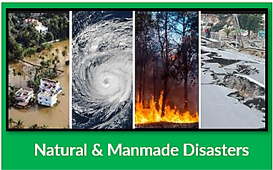
In our journey to champion safety within Indian schools, we’ve come to recognize a fundamental truth – preparedness can make all the difference during disasters, be they natural or man-made. Today, let’s delve into the steps that schools can embrace to safeguard their students and staff in the face of adversity.
Assessing Risks and Hazards:
Picture this: a school that’s primed for the unexpected. The first step is to conduct a comprehensive assessment (Safety Audit) of potential risks and hazards. Think of it as peering into a crystal ball to anticipate what nature or unforeseen events might throw our way. This involves pinpointing natural disasters like earthquakes, floods, and cyclones, alongside man-made threats like fires, chemical mishaps, and even the unimaginable, such as terrorist incidents.
The Emergency Operations Plan:
Creating a safety net requires a well-thought-out blueprint. For schools, it’s an emergency operations plan that lights the way forward when disaster strikes. This plan becomes the beacon, guiding everyone on what to do and how to do it, ensuring a coordinated response that’s effective and efficient.
Structural Fortitude: Building Resilience from Ground Up
Imagine schools as strongholds, ready to face whatever’s thrown their way. Building resilience starts with location selection – steering clear of high-hazard zones for new schools. But that’s just the start. School buildings themselves need to be equipped to withstand nature’s wrath. The experts roll in to gauge the level of resistance against specific threats, ensuring our schools are built to endure.
Training and Kits for All:
Here’s where heroes are born – within the corridors of knowledge. Students and staff are trained not just in academics, but also in the art of rescue, first aid, basic life support, and disaster management. Every block, every bus, they’re all equipped with first-aid and disaster kits, ready for action.
Navigating Sudden Days Off:
Sometimes, life hits pause unexpectedly. That’s why schools need a fail-proof plan for unexpected days off. It’s more than just closures; it’s about ensuring parents are in the loop and students continue learning from the comfort of their homes.
Drills and Exercises:
Imagine the confidence that comes from practicing. That’s why schools should hold regular drills and exercises. It’s not just about learning what to do; it’s about engraining responses into muscle memory, ensuring that when disaster strikes, the right steps are taken without hesitation.
Safe Havens and Reliable Links: Evacuation Plans and Communication
Imagine having a well-lit path when all seems dark. Schools collaborate with local authorities to map out evacuation plans. These are more than just lines on paper; they’re the routes to safety, connecting students and staff with secure havens. And in this age of connectivity, schools ensure reliable communication systems are at the ready, keeping everyone connected when it matters most.
In conclusion, the journey to safeguarding schools during disasters is no small feat. It’s a blend of assessing risks, creating robust plans, and fostering a culture of readiness. By working together and embracing these measures, schools empower their students and staff with the knowledge, confidence, and tools needed to brave the storm.
As we work closely with Indian schools, our commitment remains unshaken. Our role as safety consultants is rooted in preparing schools for the unexpected and ensuring that students and staff have the security blanket they need.
Stay Safe, Stay Prepared.
AUG
2023
